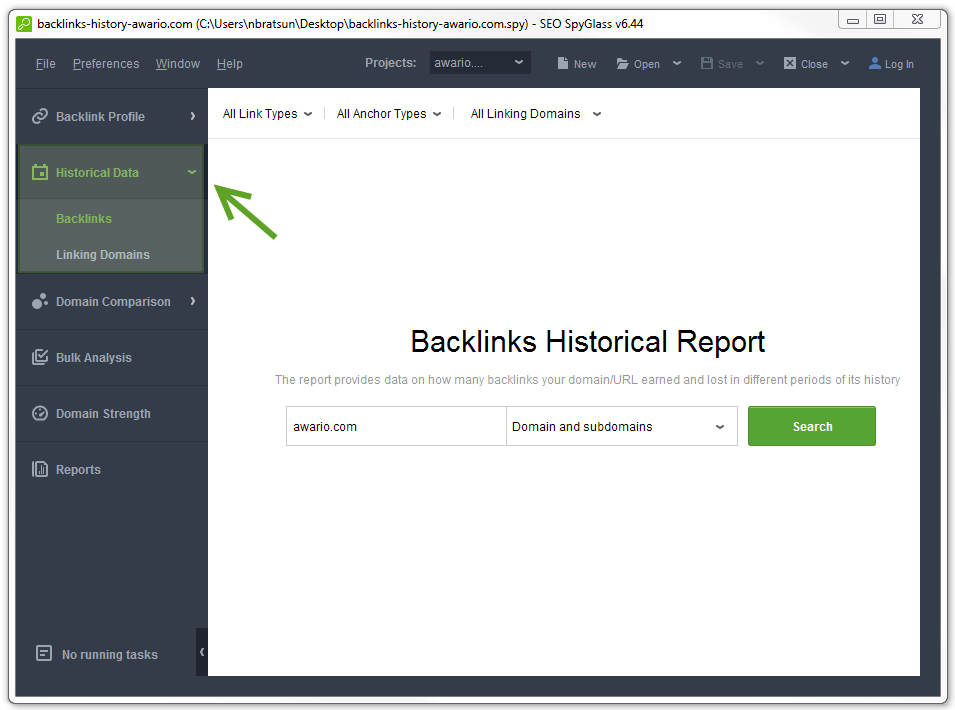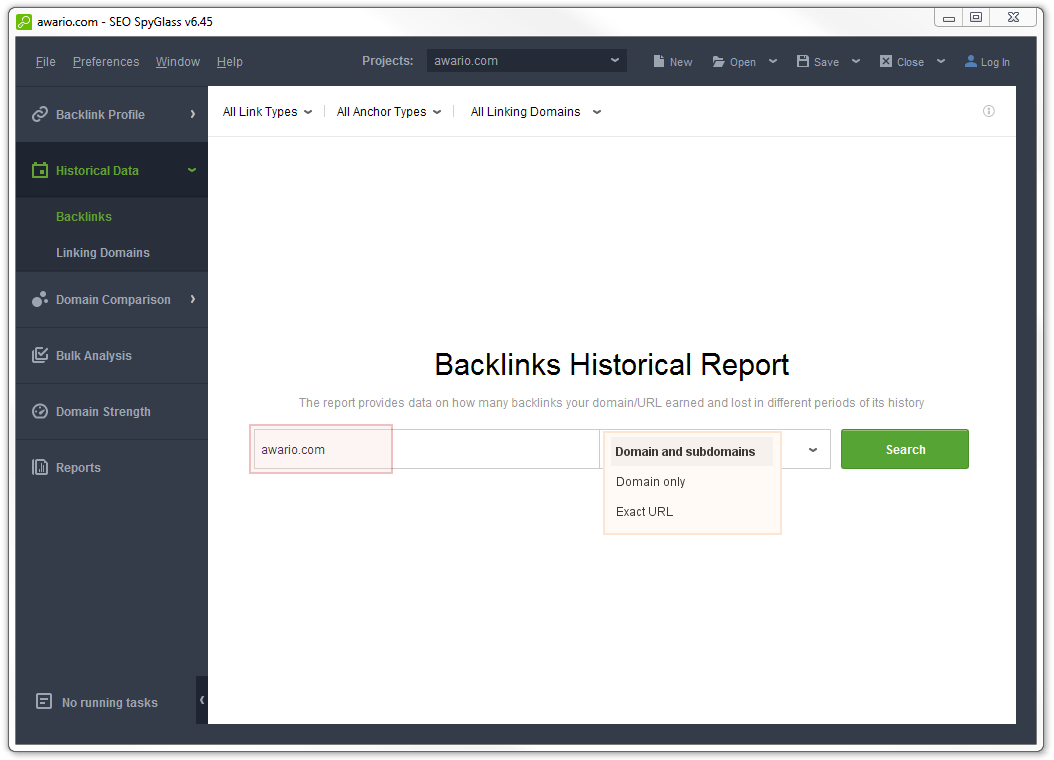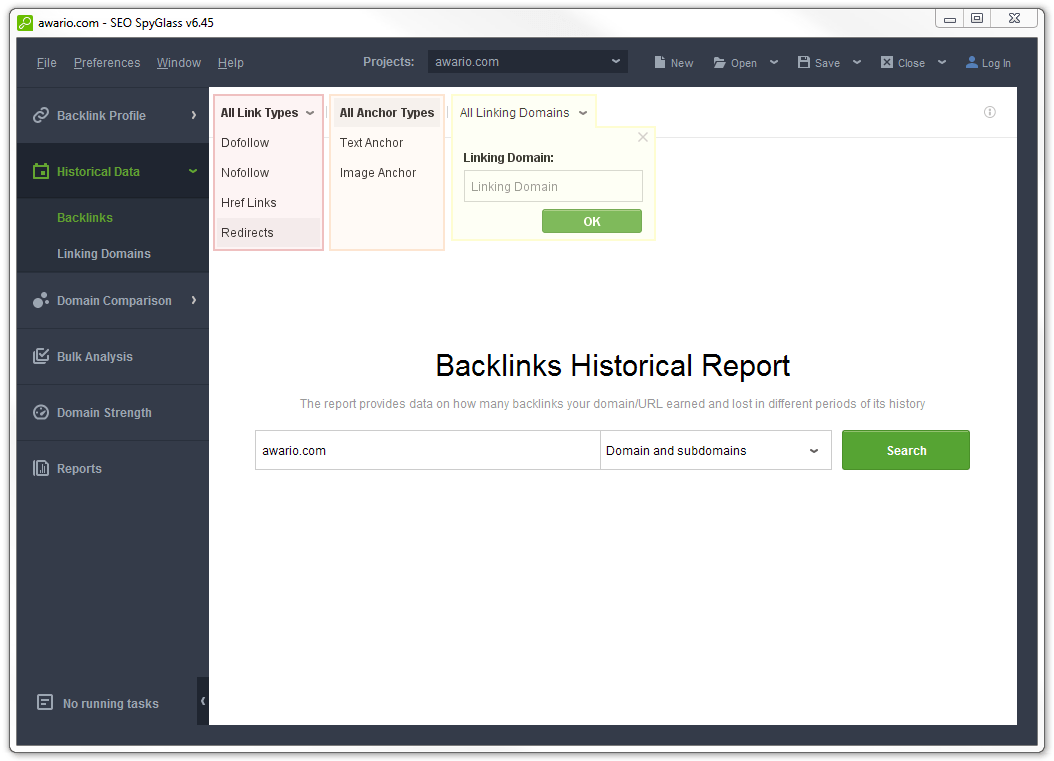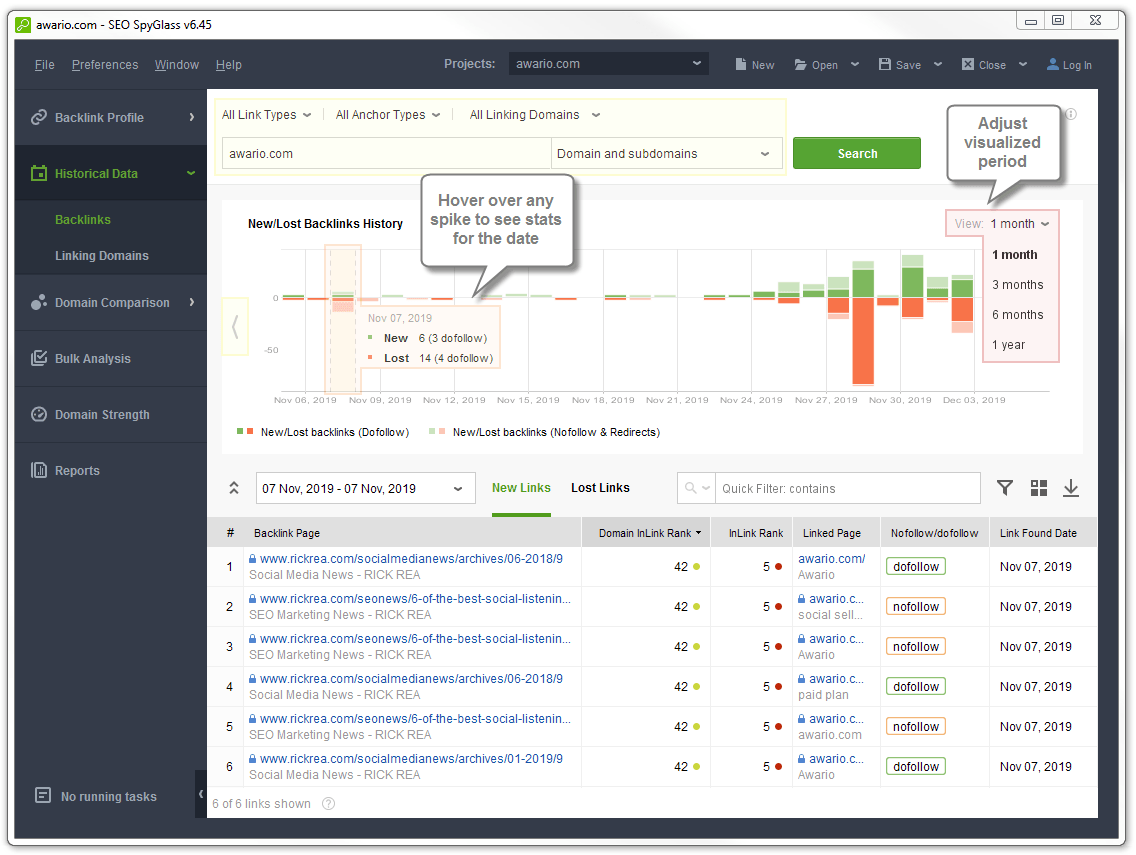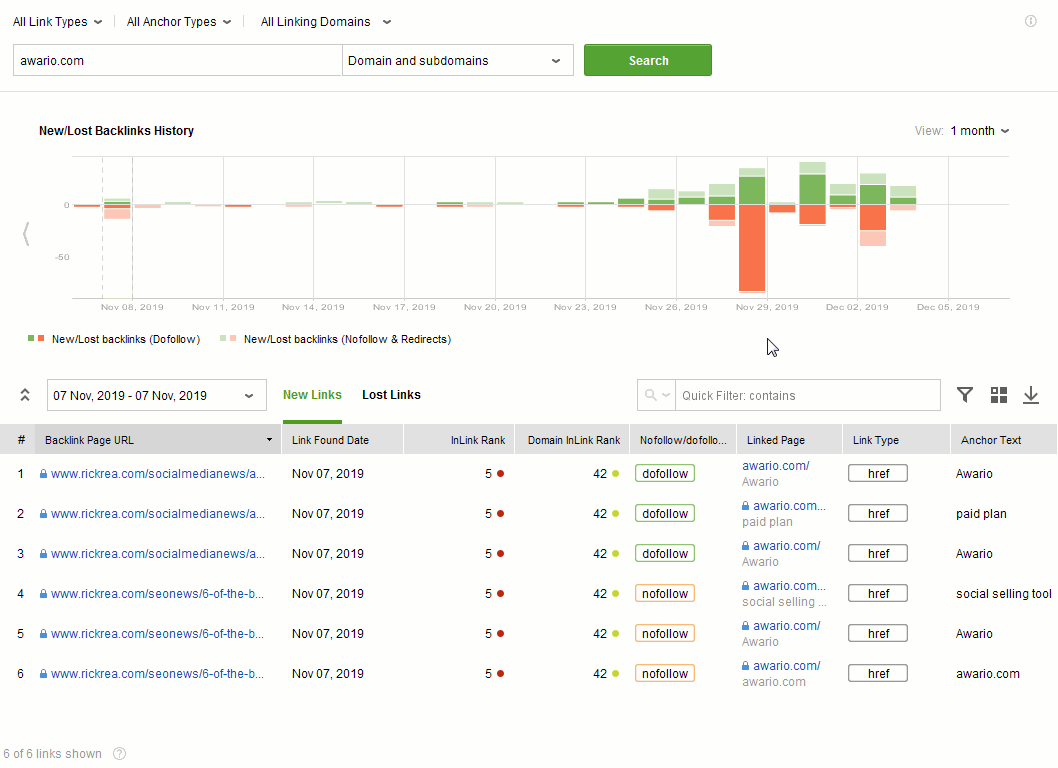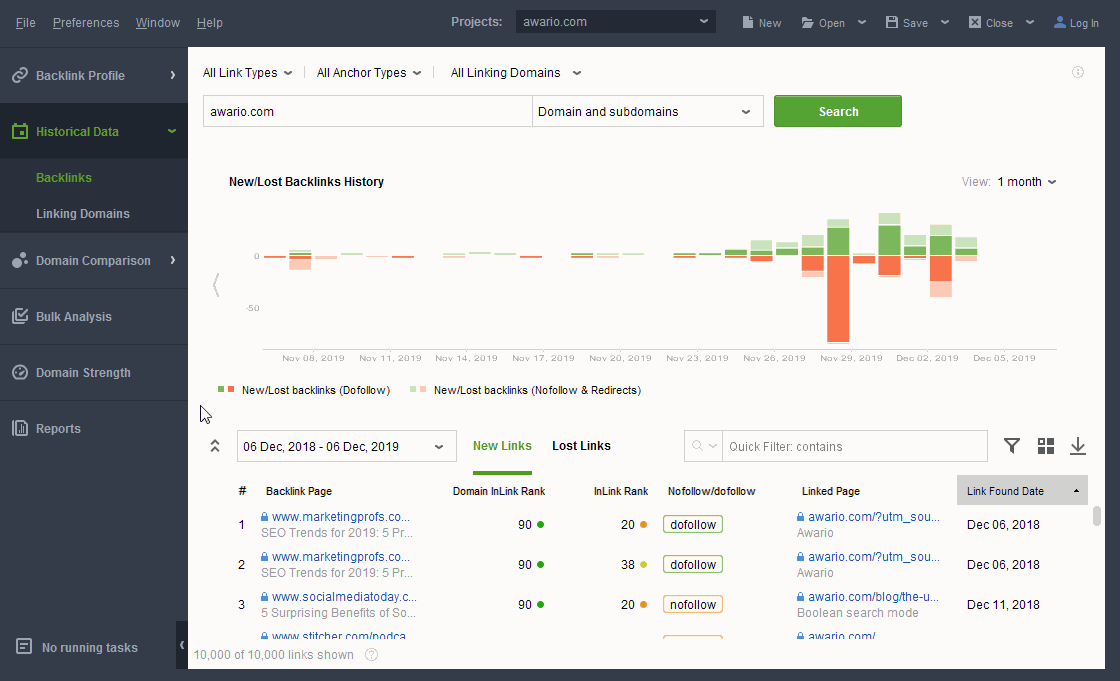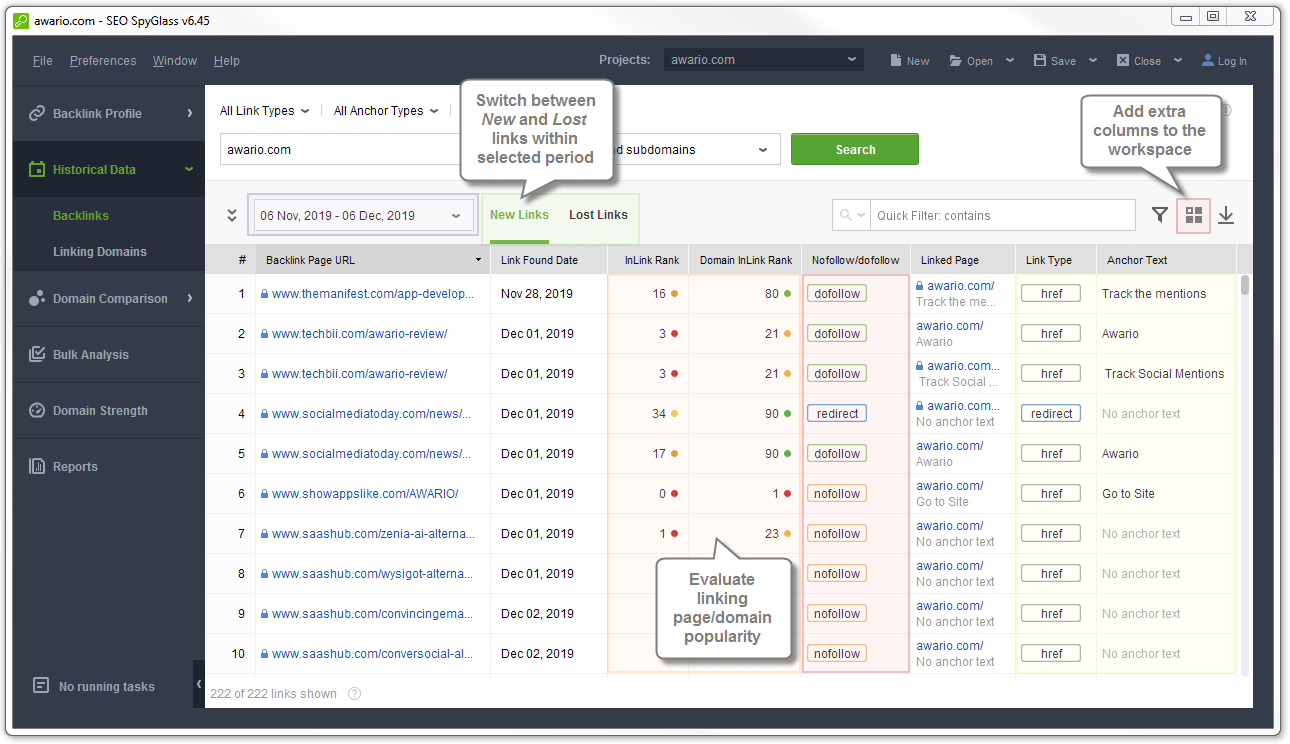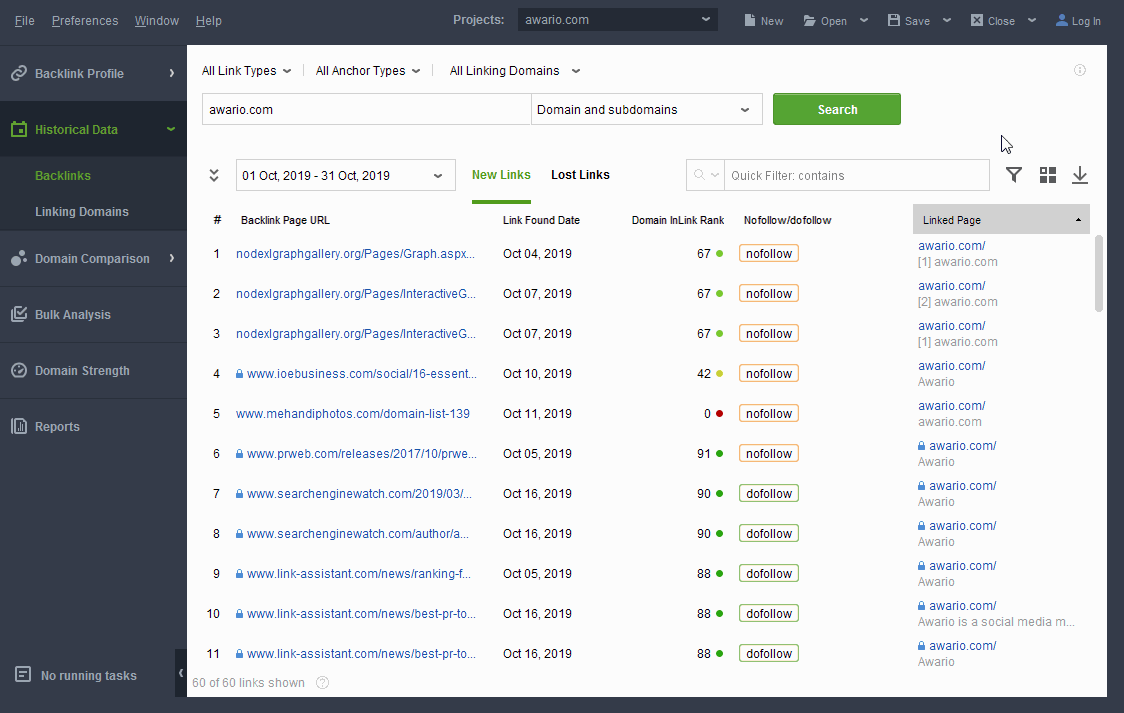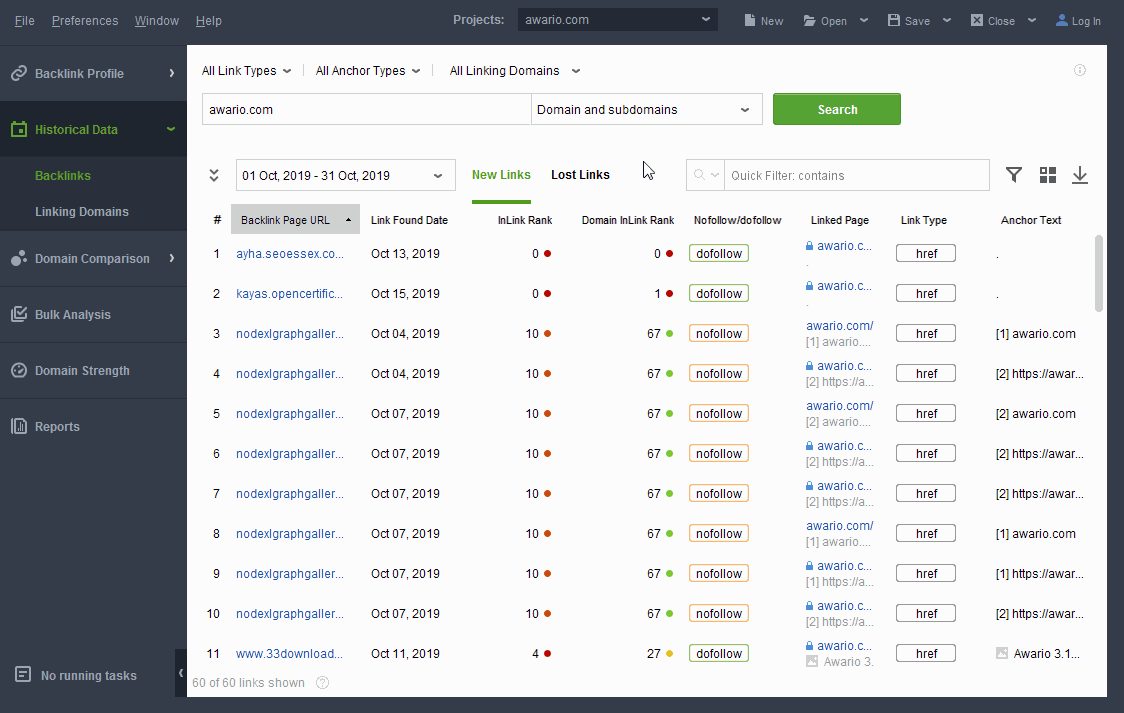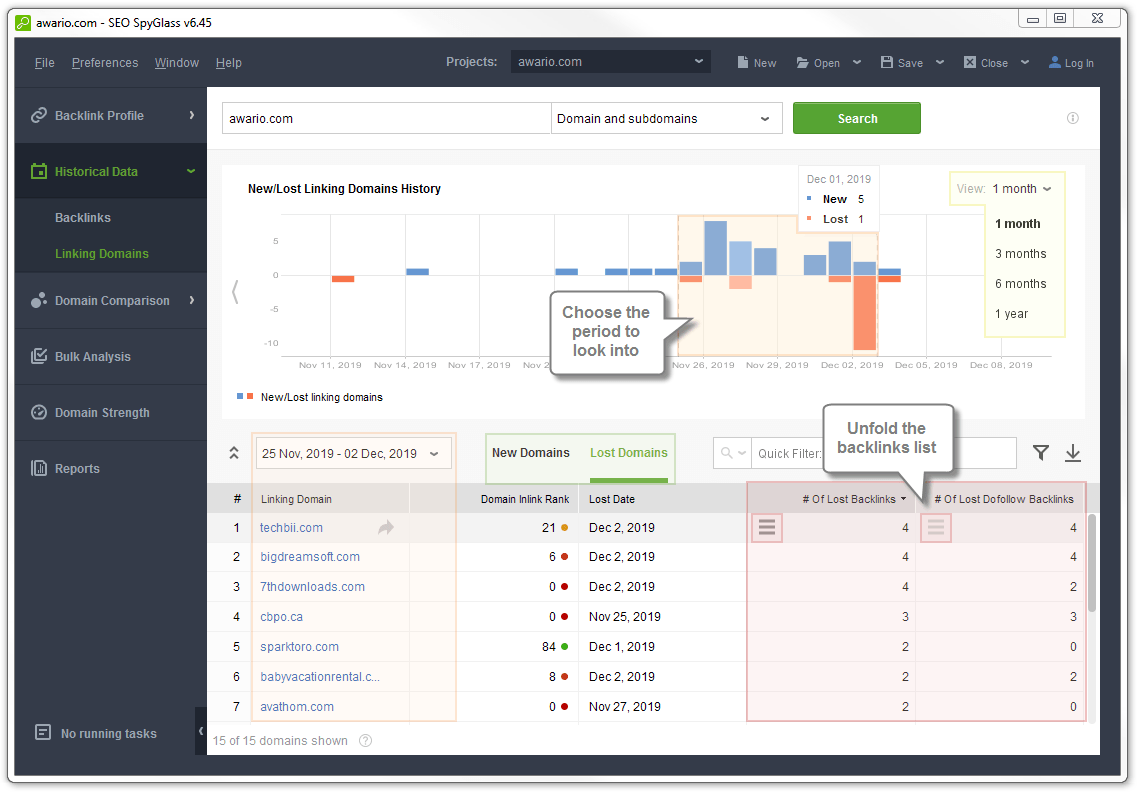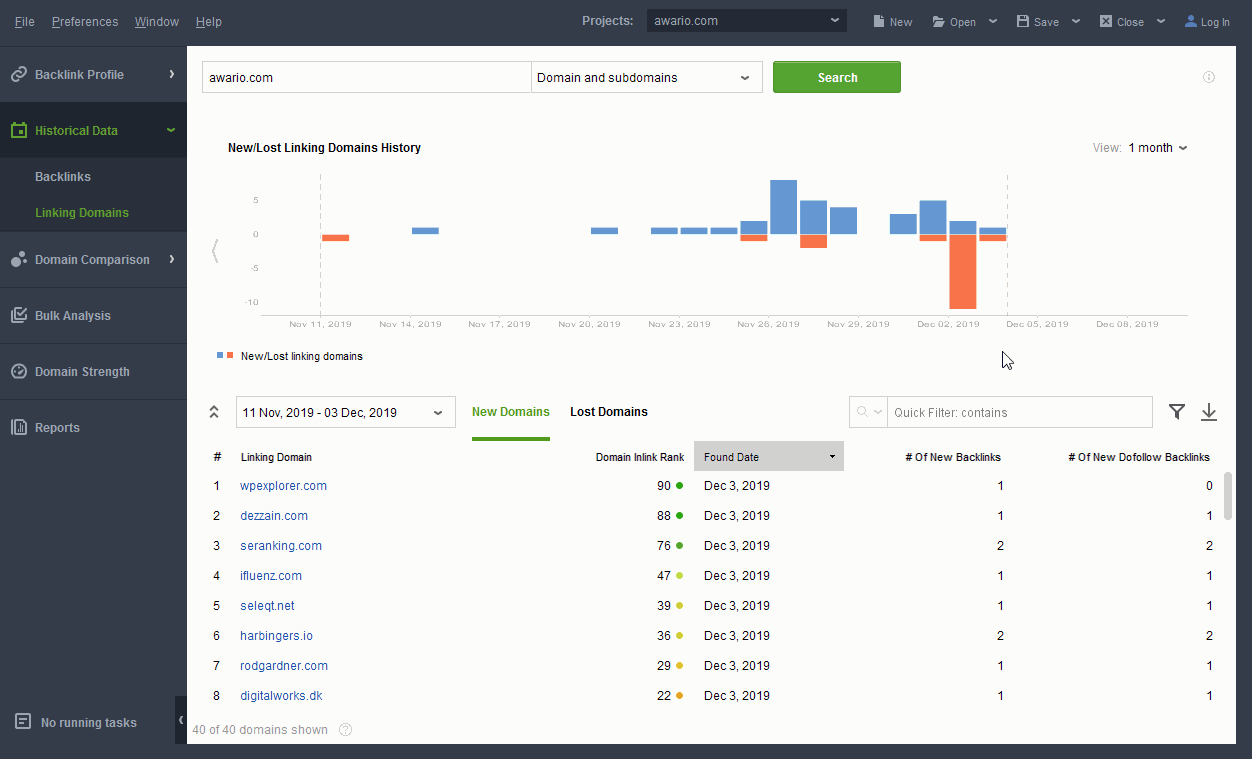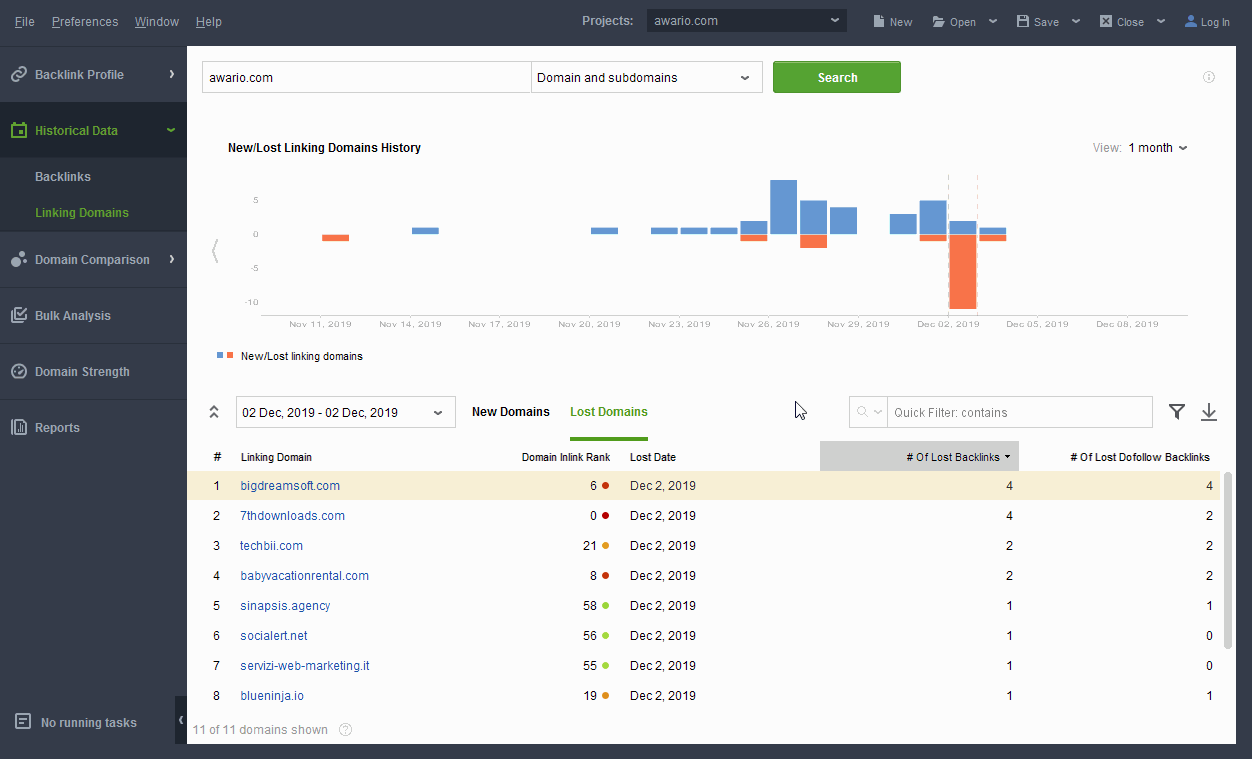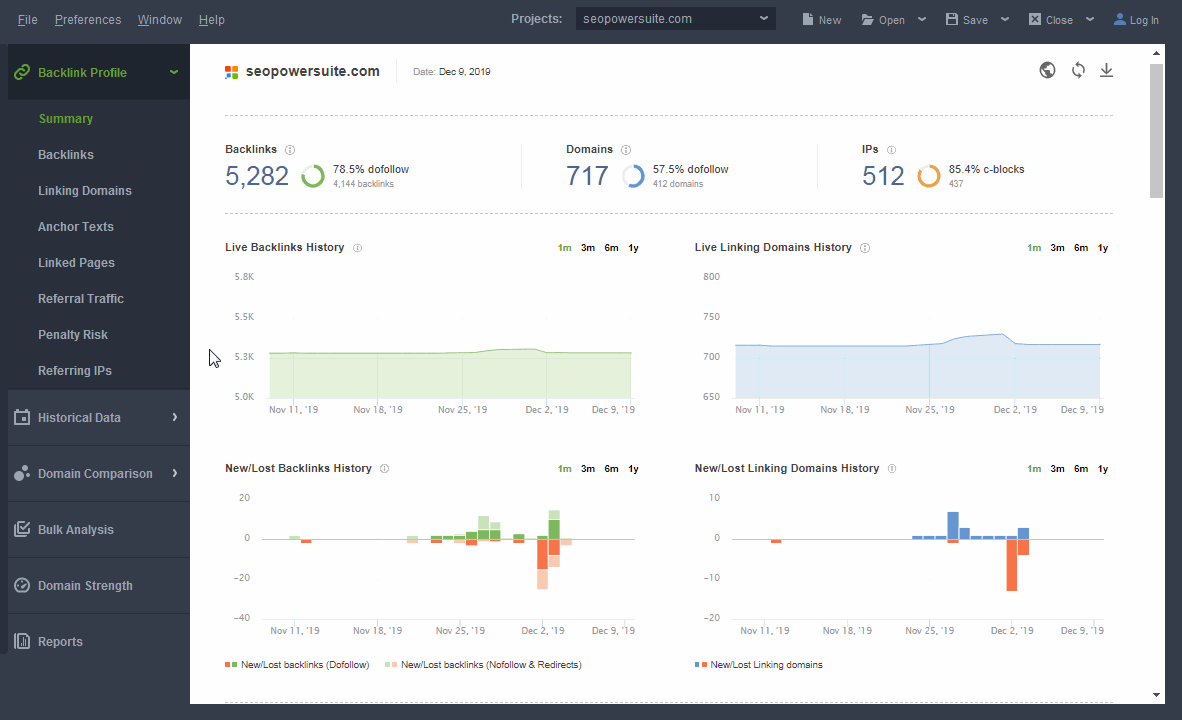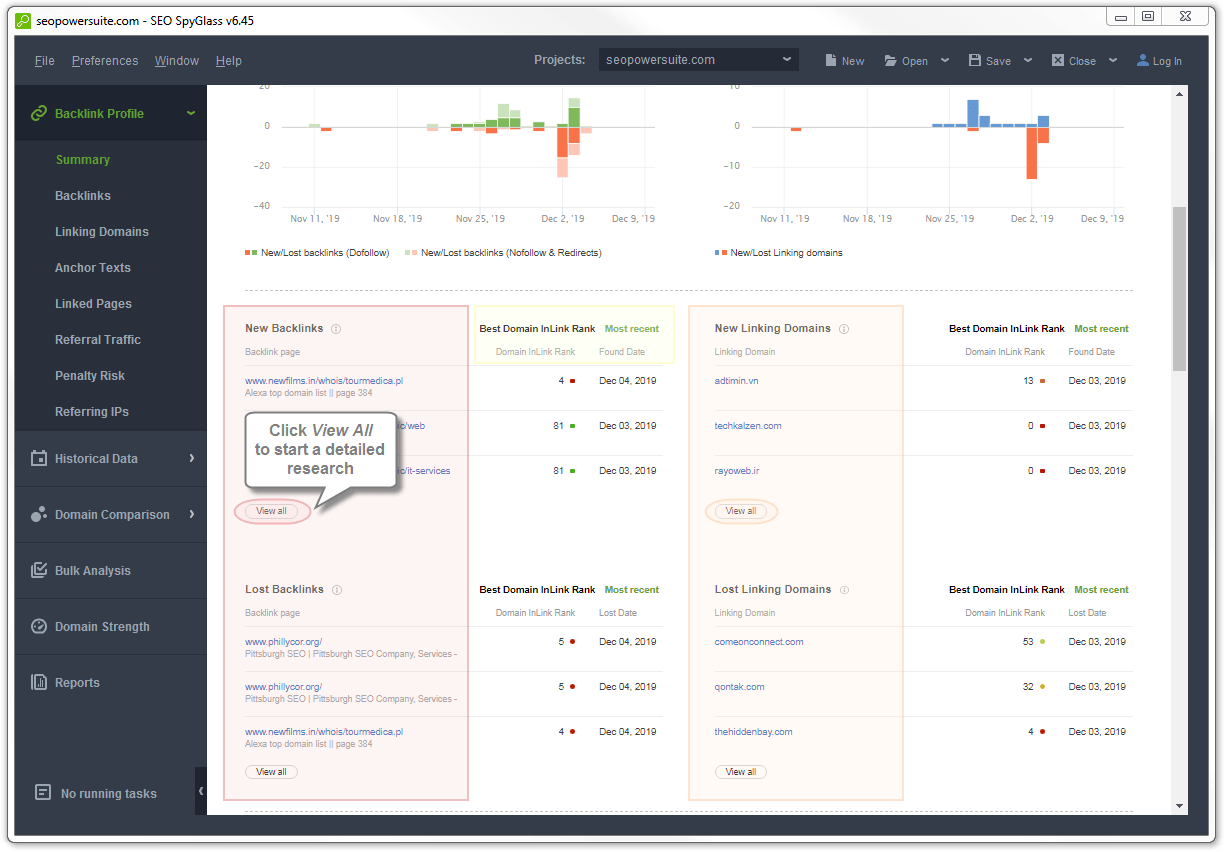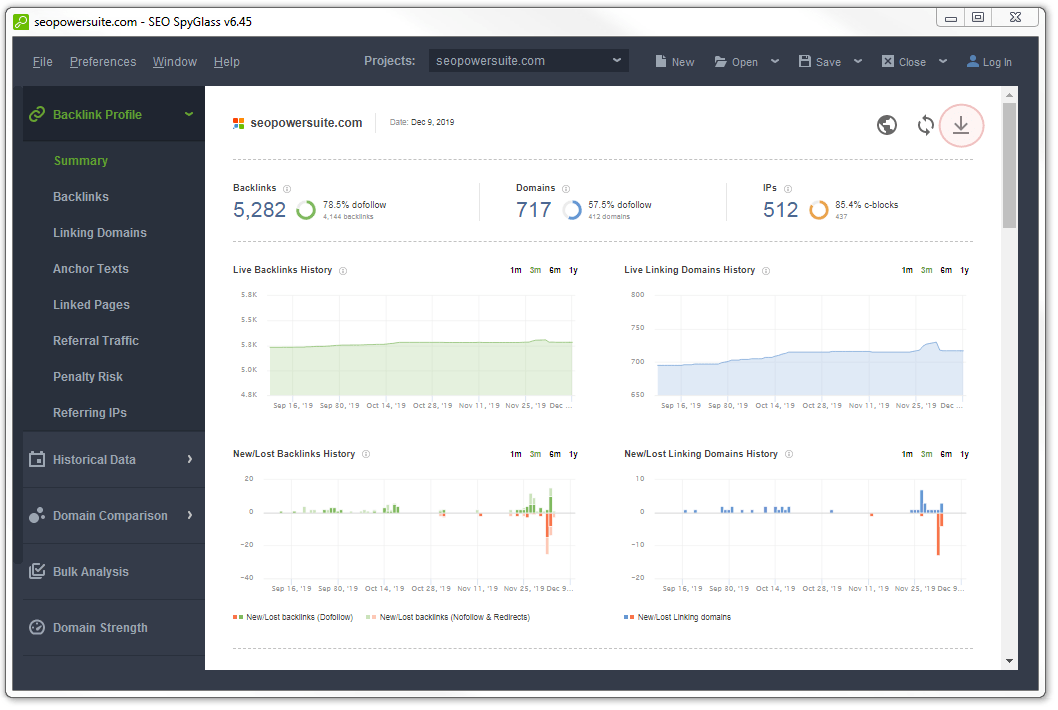- How to Install SEO PowerSuite
- How to Register SEO PowerSuite
 Rank Tracker User Manual
Rank Tracker User Manual- Getting Started
- Domain Analysis
- Keyword Research
- Competitor Research
- SERP Analysis
- Updating Keyword Data
- Checking Rankings
- Keyword Map
- Checking Traffic
- Scheduling Checks
- Setting up Alerts
- Managing Reports
- Exporting Data
- Storing Projects Online
- Search Safety Settings
- Reporting Errors
- Using Tags
- Miscellaneous Settings
 WebSite Auditor User Manual
WebSite Auditor User Manual- Application Layout
- Project Setup
- Site Optimization
- Page Optimization
- Page Speed Analysis (Core Web Vitals)
- Sitemap XML
- Robots.txt Settings
- Custom Search
- Scheduling Checks
- Setting up Alerts
- Managing Reports
- Exporting Data
- Using Tags
- Crawling Slower Sites
- Reporting Errors
- Storing Projects Online
- Miscellaneous Settings
 SEO SpyGlass User Manual
SEO SpyGlass User Manual- Application Layout
- Project Setup
- Backlink Profile Details
- Verifying Backlink Presence
- Checking Backlink Characteristics
- Analyzing Backlink Quality
- Analyzing Penalty Risk
- Disavow Backlinks
- Historical Data
- Domain Comparison & Competitive Analysis
- Bulk Analysis
- Scheduling Checks
- Setting up Alerts
- Managing Reports
- Exporting Data
- Using Tags
- Storing Projects Online
- Miscellaneous Settings
- Managing Events
- Reporting Errors
 LinkAssistant User Manual
LinkAssistant User Manual- Application Layout
- Creating a Project and Searching for Prospects
- Managing Search Results
- Analyzing Prospects
- Reaching out to Prospects
- Prospect/Backlink Management
- Link Exchange
- Scheduling Checks
- Setting up Alerts
- Managing Reports
- Exporting Data
- Using Tags
- Storing Projects Online
- Miscellaneous Settings
- Managing Events
- Reporting Errors
- Knowledgebase & Troubleshooting
- Installation & Compatibility
- Common Features & Settings
- What is Safe Query Mode and how does it work?
- Why do I see CAPTCHAs while running checks in SEO PowerSuite?
- Why SEO PowerSuite apps are running out of memory?
- Will SEO PowerSuite tools work without Search Algo Updates?
- Can I use anti-CAPTCHA keys in SEO PowerSuite?
- How do I customize my workspaces in SEO PowerSuite apps?
- How do I change the interface language?
- How do I stop getting E-mail Alerts?
- How do I re-run failed tasks in SEO PowerSuite?
- What is InLink Rank and how's it updated?
- How do I check Page Authority and Domain Authority using a MOZ API key?
- How do I request a new Search Engine?
- Rank Tracker
- How do I avoid temp blocks and ensure smooth rank tracking?
- Why rankings are different in Rank Tracker and in a browser?
- What is Visibility in Rank Tracker and how it's being calculated?
- How do I export my rank history from Rank Tracker to Excel?
- How do I import rank history from other tools to Rank Tracker?
- I can't get Number of Searches in Rank Tracker
- Why number of Sessions is lower than Expected Visits?
- Why is my country not on the list of supported regions for Rankings Keywords/Keyword Gap and Competitor Research?
- WebSite Auditor
- What do I do if WebSite Auditor freezes/runs out of memory?
- Why some of my pages are not being found by WebSite Auditor?
- How do I change my target keywords for an analyzed page in Page Audit?
- The list of competitors in Page Audit looks wrong/irrelevant
- How do I import a CSV to Keyword Map?
- Using Custom Search: CSS Selectors
- Should I care about HTML/CSS errors?
- SEO SpyGlass
- LinkAssistant
- Adding custom Meta Description for your Link Directory
- Are Nofollow links useful?
- What is Backlink Value and how do I check it?
- How do I import Link Prospects from SEO SpyGlass to LinkAssistant?
- LinkAssistant doesn't find backlinks to my site/doesn't let me add Link Prospects manually
- What's the difference between (Backlink) and (Prospect) factors in LinkAssistant?
- How come LinkAssistant cannot find any Prospects?
- Why is the Backlink Page column empty?
- SEO Reporting
- FAQ & Troubleshooting
- How do I get an invoice for my order?
- How do I change my CC for the subscription?
- Why do I see VAT/Tax on the Checkout?
- I've lost my license keys, what do I do?
- Can I get Customer Support?
- Can I get remote assistance?
- Software auto-update won't complete (or gets stuck in a loop)
- Java Virtual Machine Launcher: Could not create Java Virtual Machine
- I haven't received any order confirmation/license details
- How do I connect my email account to SEO PowerSuite?
- I don't get any data from my Google accounts (Search Console, Analytics, Google Ads)
- How do I report an issue in SEO PowerSuite?
- How do I get a PageSpeed Insights key?
- How to Install SEO PowerSuite
- How to Register SEO PowerSuite
 Rank Tracker User Manual
Rank Tracker User Manual- Getting Started
- Domain Analysis
- Keyword Research
- Competitor Research
- SERP Analysis
- Updating Keyword Data
- Checking Rankings
- Keyword Map
- Checking Traffic
- Scheduling Checks
- Setting up Alerts
- Managing Reports
- Exporting Data
- Storing Projects Online
- Search Safety Settings
- Reporting Errors
- Using Tags
- Miscellaneous Settings
 WebSite Auditor User Manual
WebSite Auditor User Manual- Application Layout
- Project Setup
- Site Optimization
- Page Optimization
- Page Speed Analysis (Core Web Vitals)
- Sitemap XML
- Robots.txt Settings
- Custom Search
- Scheduling Checks
- Setting up Alerts
- Managing Reports
- Exporting Data
- Using Tags
- Crawling Slower Sites
- Reporting Errors
- Storing Projects Online
- Miscellaneous Settings
 SEO SpyGlass User Manual
SEO SpyGlass User Manual- Application Layout
- Project Setup
- Backlink Profile Details
- Verifying Backlink Presence
- Checking Backlink Characteristics
- Analyzing Backlink Quality
- Analyzing Penalty Risk
- Disavow Backlinks
- Historical Data
- Domain Comparison & Competitive Analysis
- Bulk Analysis
- Scheduling Checks
- Setting up Alerts
- Managing Reports
- Exporting Data
- Using Tags
- Storing Projects Online
- Miscellaneous Settings
- Managing Events
- Reporting Errors
 LinkAssistant User Manual
LinkAssistant User Manual- Application Layout
- Creating a Project and Searching for Prospects
- Managing Search Results
- Analyzing Prospects
- Reaching out to Prospects
- Prospect/Backlink Management
- Link Exchange
- Scheduling Checks
- Setting up Alerts
- Managing Reports
- Exporting Data
- Using Tags
- Storing Projects Online
- Miscellaneous Settings
- Managing Events
- Reporting Errors
- Knowledgebase & Troubleshooting
- Installation & Compatibility
- Common Features & Settings
- What is Safe Query Mode and how does it work?
- Why do I see CAPTCHAs while running checks in SEO PowerSuite?
- Why SEO PowerSuite apps are running out of memory?
- Will SEO PowerSuite tools work without Search Algo Updates?
- Can I use anti-CAPTCHA keys in SEO PowerSuite?
- How do I customize my workspaces in SEO PowerSuite apps?
- How do I change the interface language?
- How do I stop getting E-mail Alerts?
- How do I re-run failed tasks in SEO PowerSuite?
- What is InLink Rank and how's it updated?
- How do I check Page Authority and Domain Authority using a MOZ API key?
- How do I request a new Search Engine?
- Rank Tracker
- How do I avoid temp blocks and ensure smooth rank tracking?
- Why rankings are different in Rank Tracker and in a browser?
- What is Visibility in Rank Tracker and how it's being calculated?
- How do I export my rank history from Rank Tracker to Excel?
- How do I import rank history from other tools to Rank Tracker?
- I can't get Number of Searches in Rank Tracker
- Why number of Sessions is lower than Expected Visits?
- Why is my country not on the list of supported regions for Rankings Keywords/Keyword Gap and Competitor Research?
- WebSite Auditor
- What do I do if WebSite Auditor freezes/runs out of memory?
- Why some of my pages are not being found by WebSite Auditor?
- How do I change my target keywords for an analyzed page in Page Audit?
- The list of competitors in Page Audit looks wrong/irrelevant
- How do I import a CSV to Keyword Map?
- Using Custom Search: CSS Selectors
- Should I care about HTML/CSS errors?
- SEO SpyGlass
- LinkAssistant
- Adding custom Meta Description for your Link Directory
- Are Nofollow links useful?
- What is Backlink Value and how do I check it?
- How do I import Link Prospects from SEO SpyGlass to LinkAssistant?
- LinkAssistant doesn't find backlinks to my site/doesn't let me add Link Prospects manually
- What's the difference between (Backlink) and (Prospect) factors in LinkAssistant?
- How come LinkAssistant cannot find any Prospects?
- Why is the Backlink Page column empty?
- SEO Reporting
- FAQ & Troubleshooting
- How do I get an invoice for my order?
- How do I change my CC for the subscription?
- Why do I see VAT/Tax on the Checkout?
- I've lost my license keys, what do I do?
- Can I get Customer Support?
- Can I get remote assistance?
- Software auto-update won't complete (or gets stuck in a loop)
- Java Virtual Machine Launcher: Could not create Java Virtual Machine
- I haven't received any order confirmation/license details
- How do I connect my email account to SEO PowerSuite?
- I don't get any data from my Google accounts (Search Console, Analytics, Google Ads)
- How do I report an issue in SEO PowerSuite?
- How do I get a PageSpeed Insights key?
Historical Data
Historical Data module in SEO SpyGlass allows you to tap into the historical index for your site and competitors to:
- Research the backlinks and linking domains, gained or lost over a certain period of time in the past
- Spot and analyze any drastic spikes or drawdowns
- Dig into competitors' tactics
and many more!
To start researching, jump to Historical Data in the lefthand sidebar.
Enter the domain/URL
Type in the domain or specific webpage URL you'd like to research.
Choose the corresponding search mode - it can be set to domain and subdomains, domain only or exact URL.
Adjust the search settings (optional)
- Specify the link type you are particularly interested in
- Switch between the links from text / from images
- Choose between researching the links from a particular domain or all
Hit the Search button and allow a few moments for the app to harvest the data.
Review backlink profile development
Once the search is complete, you'll get to the Backlinks sub-module. At the top, you'll see the History graph reflecting the changes to the backlink profile of the domain/webpage researched.
- Upon hovering over any spike or fall, view the stats for the date with the exact number of backlinks gained and lost
- In a dropdown on the right, choose the visualized period (from 1m to 1y)
- Scroll the graph back and forth using the arrows on the sides
Research any date range
Focus on any date / date range within the last year to make thoughtful adjustments to your SEO strategy based on the results.
Right on the graph, click twice on any brick to select that specific date, or click > drag > click to select the period.
The workspace below will then list the links gained or lost on a certain date / within the selected period only.
Alternatively, use the Calendar right in the workspace - type in the dates manually, choose a predefined period or select a custom range (same way, click > drag > click).
Track New links
Switch to New links to explore the links that were gained (first found) within the chosen period.
- Evaluate the outcome of any specific campaign you've run on those dates
- See the backlinks brought by any piece of content published
- Analyze which activities tend to naturally bring you backlinks
- Spot correlations between ranking upturns and backlink profile spikes
- Dig into all of the above for your competitors' sites and uncover their strategies or valuable link sources!
At a glance, evaluate the authority of the linking pages/domains, revise the link types and anchor details. See which links are a valuable addition to your profile and which ones seem out of place.
Investigate Lost backlinks
Go to Lost backlinks to see which ones were lost for whatever reason within the chosen period. Use the predefined workspace filter to switch between the removal reasons:
- Link Removed: the page is in place, yet the link to your site has been removed from it
- Page Not Found: the backlink page itself has been deleted by the site owner (returns the 404 code)
- Redirect: the original backlink page now redirects to another page, thus its content is no longer accessible
- Not Canonical: the link is found on a page that is non-canonical (has the other URL specified as the canonical version of the page)
- Noindex: the backlink page is restricted from indexation
- Crawl Error: the backlink page was not accessible due to some fetching issue other than 404
- Page Dropped: the backlink page has been manually excluded from our Link Index and further crawls due to high spam score, consistent inaccessibility or other violation
Revising the lost links in tandem with the reasons is a great aid in:
- Tracking down and contacting site owners with a request to reinstate a removed link or move it to another existing page
- Keeping an eye on arrangments - if the backlink status changes to noindex, non-canonical or redirect
- Spotting the links lost by your competitors which can potentially be picked up by you
Customize your workspace and filter the results
The workspace is customizable to let you revise the factors you are interested in. Upon going to the workspace editing menu, you can add or hide any columns.
Additionally, you can set up custom filters to sort out the data based on any factor (for instance, filter out the newly-gained backlinks coming from low-authority pages) or a combination of factors.
Export the results
After you have adjusted the period, revised the data and filtered out the records worth a closer look - export the results from your project for any further manipulations.
- Any edition: select the records in your workspace > right-click on selection > Copy to Clipboard, then paste the records into any text file
- Enterprise edition: use the Quick CSV Export button to save all currently visible records in as a CSV file
Track changes in the number of linking domains
Switch to the Linking Domains sub-module to revise the new and lost linking domains.
Check with the History graph to spot any drastic changes at any point. Scroll the graph or switch between the visualized periods the same way as in the Backlinks sub-module.
Choose any date or date range to see the detailed stats in the workspace below. On-hover, unfold the list of links for any domain in the table.
Spot the sources of loss
Below you can see how you can investigate a dropdown (select the date), then spot the domain you've lost the most backlinks from (sort the records by the # of Backlinks column), and see the specific links lost.
To investigate the reasons, hit the View All button - the app will analyze the given domain closely and will show the causes of losing each link.
Generate Summary report
Under Backlink Profile > Summary, you can find an interactive report showing profile development over time.
You can hover over any of the charts and move along to see how the changes correlate.
Below the graphs, you can see the stats for the New / Lost Backlinks and Domains for the last 30-day period, with a few link examples (either the top ones by InLink Rank or the most recent ones).
In the Enterprise edition, you can export the Summary report with the Quick PDF Export button at the top right corner.
Run a new search
To run brand new research with the other search settings or for another domain/page, simply adjust the settings anew and hit Search.



